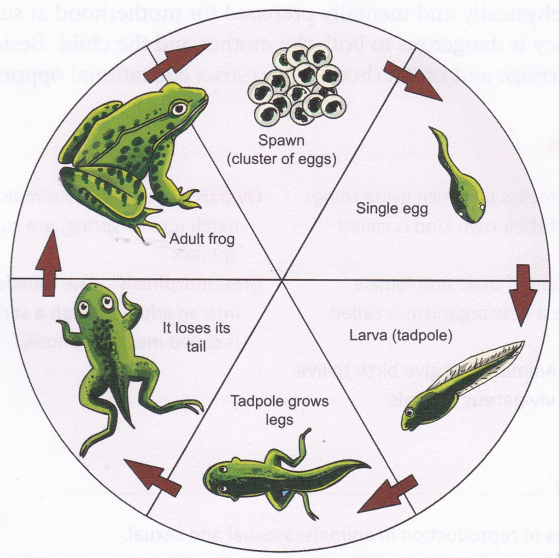What is Viviparous Reproduction
Viviparous and Oviparous Animals
Based on how they produce offspring, animals can be divided into the following two types.
Viviparous animals:
Animals that give birth to live offspring (i.e., babies) are called viviparous animals. Mammals like cow, horse, dog, cat, and human beings are examples of viviparous animals.
Oviparous animals:
Animals that lay eggs, which hatch into offspring, are called oviparous animals. Birds, snakes, frogs, and butterflies are examples of oviparous animals.
Newly hatched birds and young ones of mammals look similar to their parents. However, in some animals the newly hatched individuals do not resemble the parents and undergo a series of changes (called metamorphosis) after birth. Let us understand this process using the life cycles of frog and butterfly.
Read More:
- Vegetative Reproduction in Plants
- Reproduction in Humans
- Different Types of Asexual Reproduction
- Sexual Reproduction in Flowering Plants
Metamorphosis in Frog and Butterfly
There are three main stages in the life cycle of a frog:
Egg —-► Larva (tadpole) —-► Adult
The various changes that occur during the life cycle of a frog are shown in Figure.

These changes are controlled by the hormone thyroxine.
Similarly, there are four main stages in the life cycle of a butterfly:
Egg —-► Larva (caterpillar) —-► Pupa —-► Adult
The changes that occur during these stages are controlled by two hormones: juvenile hormone and ecdysone. The larva transforms into an adult after undergoing a series of drastic changes. The transformation of a larva into an adult through a series of drastic changes is called metamorphosis.
Cloning is a technique through which multiple copies of a single gene, chromosome, or whole organism can be produced. Perhaps the most famous example of cloning is Dolly the sheep, which was cloned at Roslin Institute, Scotland. Cloning has many applications, including generation of tissues and organs for transplant.
